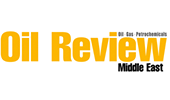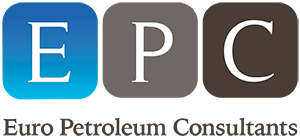In the last few years the Downstream business was seen to be struggling against a low profit landscape with a wide variety of factors negatively affecting financial results, including cuts in oil production and number of new developments and resources, a decrease in demand for major refined products and petrochemicals, refining schemes not appropriate for current market conditions, energy costs, to name but a few.
Overall structural weakness and more stringent regulations, financial 'stress' and new units in regions like ME, India and Russia led to overcapacity and forced evolution of markets.
There remains a number of important questions to be asked and addressed, such as market needs and opportunities for gasoline and/or diesel, power generation, coke production and petroleum gas utilisation, use of unconverted materials, dealing with budget constraints, best ways to integrate within existing refinery (options for revamping & modernisation), etc.
Fast forward to today and we see refiners looking for options to achieve production flexibility between diesel and gasoline maximisation - diesel and gasoline demand seems to be growing at almost equal rates thus finding a balance is key to success.
Kuwait is investing in a +$30 bln. Plan to become the region’s clean fuels leader, focusing on modernising and integrating the country’s Mina Abdullah and Mina Al-Ahmadi refineries, as well as building the region’s largest refinery, the Al-Zour plant. Clean fuels production is important for the country both in terms of environmental protection policy and profitability improvement.
Once completed, the reconfigured and integrated Mina Abdullah and Mina Al-Ahmadi refineries will decrease the sulphur in gasoline production from 500 ppm to less than 10 ppm. Benzene and aromatics concentrations will also decrease. Bunker fuel oil sulphur content will decrease from 4.5 ppm to 1 ppm, and maximum sulphur content of full-range naphtha will drop from 700 ppm to 500 ppm. With the construction of Al-Zour and the upgrading and integration of its existing domestic refineries, Kuwait is set to become the largest producer of clean fuels in the Middle East by 2019.
Using the example of these capital construction investment projects we look at the importance of localisation, the use of best industry practices, and the implementation of up-to-date technologies.
A need for flexibility means that now ‘more than ever’ operational optimisation will be key to achieving sustainable margins. Operators must fully understand the local and global market changes and select the investment strategy to best meet their goals and objectives. All operators should now be looking at how best to optimise their existing facilities.
To improve margins, refining companies have a choice of two paths that can help increase yield of light petroleum products: (1) primary distillation capacity addition or (2) deep conversion units to process heavier crudes and residues.
KNPC have increased the capacity of Mina Abdullah (MAB) and Mina Al-Ahmadi (MAA) Refineries to a combined total of 800,000 bpd (MAA 346,000 bpd, MAB 454,000 bpd) and to connect them as an Integrated Refining Complex. The expansion is part of the Clean Fuels Project (CFP) 2020.
Kuwait Integrated Petroleum Industries Co. (KIPIC), a KPC Subsidiary, is building a grassroot refinery in the Al Zour area: Al-Zour Refinery Project (ZOR)/Kuwait New Refinery Project (NRP) which will be able to process 615,000 BPSD of light Kuwait crude oil or 535,000 BPSD of heavy mix Kuwait crude oil.
Kuwait Petroleum Corp. awarded $11.5 billion worth of EPC contracts for the Al-Zour refinery project.
The budget for the refinery, targeted for completion in late 2018 or early 2019, increased by about $2.5 billion from initial estimates to reach $16 billion.
Al-Zour will produce about 250,000 b/d of low-sulphur fuel to feed Kuwait’s power stations and desalination plants, and a growing petrochemical industry.
CFP investment cost for KNPC is estimated to be around $16.9 bln., with the new refinery - $14.4 bln., along with some other facilities like LNG tank farms and terminals, gas trains, etc. the whole complex with all connected utilities will require around $40 bln. by 2020.
Value of ongoing contracts (signed and awarded by 2018) – over $2.6 bln., 19% of which have been attributed to local companies, a positive sign of the trend to use in-country resources & talent.
These extremely large projects require thorough re-evaluation at each stage, strong control over main project objectives, well-organised coordination between the numerous parties involved, and experienced teams to manage the projects.
KNPC is an example of an owner-operator that became convinced of the benefits of model-based versus factor-based estimating after seeing estimate variances drop from 40 to 15 percent. KNPC now requires all interested EPCs to supply bids using special Capital Cost Estimator.
Of late, many companies have been looking into deep conversion processes - as they look to address the issues of efficient feed utilisation, product optimisation – a larger variety of products than a simple gasoline/diesel/fuel oil process scheme and refinery complexity increase.
To introduce deep conversion process to a plant, a refinery can do it via new construction of a complex or choose an option within a modernisation project, including unit revamps and upgrades. Each option has its own advantages: grassroot new construction allows more flexibility of process configuration and parameters, but at the same time requires certain infrastructure, construction site and usually means higher investments (CAPEX); while modernisation is the optimal solution when a unit is built in an operating plant where options for new construction are limited. Modernisation could be done in order to gain capacity of certain unit/s or to convert it from one process to another to best meet market demand.
In each case there is a number of ways to achieve high level of process integration within the plant; an essential step is to define the most suitable technology option for that.
For KNPC; after reviewing 30 plus refining options and schemes, a combination of ARDS (atmospheric residue desulphurisation)/Coking/HCR conversion was chosen for bottom of the barrel upgrading.
The objective of CFP is to expand the two existing refineries (as mentioned above) in order to meet the future diversified market requirements while maintaining high safety standards. Whereas ZOR’s objective is to produce 1% sulphur LSFO (1st stage) and provide feedstock for further conversion.
HT residue FCC was being considered for providing propylene feedstock for future petrochemicals facilities and production of MOGAS.
ZOR will have the world’s largest ARDS complex - several optimisation features were used in order to increase efficiency – i.e, heat integrated complex, maximised hydrogen recovery, efficient Sulphur and condensate recovery, zero liquid discharge from wastewater treatment facilities, zero flaring design for flare gas recovery system, etc.
There were several challenges for the project to be addressed:
- safety – very high pressure;
- frequent catalyst changeover every 2 months for each train (catalyst lifecycle - 1-year-period for heavy crude);
- complex catalyst activation & handling;
- highly corrosive and fouling service – inspection & monitoring needed;
- crude desalting and sulphur recovery – unstable salt & sulphur content in feedstock;
- compatibility of crudes.
KNPC was also attentive to improved business performance. In these projects, revamps were given priority: debottlenecking of CDU, Coking, HCR units; optimisation of AR FO production – major revamp of ARDS units at MAB refinery (+28% capacity, +36% catalyst lifecycle, higher distillate yield, LSFO quality).
Another case of operational optimisation to be highlighted at these large facilities in Kuwait is the Implementation of Operational Excellence Program (BIP).
Based in Kuwait, Petrochemical Industries Company (PIC) was founded in 1963 as the first chemical fertilizer complex of its kind in the region. Today, PIC is a petrochemical industry leader in Kuwait and throughout the Middle East.
In addition to manufacturing and marketing fertilizers, olefins and aromatics in Kuwait, PIC participates in multiple joint ventures that also produce and market chemicals both locally and internationally.
At the initial stage of the programme development PIC’s concept of operational improvements implied formulation of vision, strategy and objectives. The company decided to develop the programme on the basis of three standard principles: Lean Production (Lean), Quality Management (Six Sigma) and Project Management (PM).
Among the top priorities were HR performance, focus on the consumer’s individual needs and the process approach under the slogan “Better, Faster, Cheaper!”
The operational performance metric included criteria such as expenditure level, production cycle time and the rejection rate. Improvements were introduced by using a standard procedure aimed at building a knowledge management system as the backbone for further optimisation.
A critical factor was effective employee engagement, i.e. explicit goal-setting and adequate incentives, effective interaction and communication, and a consistent process of project evaluation and selection.
Such process needs to be well established, continuous and consider borrowing needs.
According to PIC, thanks to continuous leadership training of top managers, annual awareness sessions and quarterly training to identify improvement possibilities, the company saved $173 million, successfully completed 524 projects, obtained 84 certified project managers (leaders), acquired new competencies and revised the corporate culture to conform to the best global practices.
To summarise, in order to sustain and increase margins refiners need to increase output quantity and quality with deep conversion and residue upgrading, choose configuration and technology according to in-depth study to evaluate which scheme best fits market and budget requirements.
It is also very important to select optimal project implementation strategies, taking into account multi-technology options that provide a number of alternatives to a single process unit approach – these recommendations are not a ‘cure-all’ solution, but thorough analysis of best practices and opportunities within the company should form a basis for prospects and plans for the future.
 Euro Petroleum Consultants is a technical oil and gas consultancy with offices in Dubai, London, Moscow, Sofia and Kuala Lumpur. Euro Petroleum Consultants also organises leading conferences and training courses worldwide. For further details please visit www.europetro.com.
Euro Petroleum Consultants is a technical oil and gas consultancy with offices in Dubai, London, Moscow, Sofia and Kuala Lumpur. Euro Petroleum Consultants also organises leading conferences and training courses worldwide. For further details please visit www.europetro.com.
Published by:

